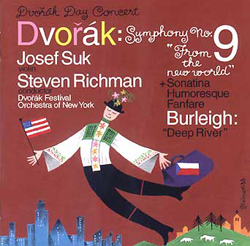Description
Sound Clips (MP3):
1. Beethoven- Symphony No. 5 in C minor Op. 67- I. Allegro con brio
2. Beethoven- Symphony No. 5 in C minor Op. 67- II. Andante con moto
3. Beethoven- Symphony No. 5 in C minor Op. 67-III. Allegro
4. Beethoven- Symphony No. 5 in C minor Op. 67- IV. Allegro
5. Brahms- Symphony No. 1 in C minor, Op. 68- I. Un poco sostenuto… Allegro
6. Brahms- Symphony No. 1 in C minor, Op. 68- II. Andante sostenuto
7. Brahms- Symphony No. 1 in C minor, Op. 68- III. Un poco Allegretto e grazioso
It appears that Leopold Stokowski first realized the potential offered by a youth ensemble when he observed a number of regional auditions for the Curtis Institute held during the Philadelphia Orchestra’s 1936 U.S. tour. Not long afterward, he met Aubrey Williams, head of the National Youth Administration, and proposed that they “form an orchestra of young people.” Eventually, with some support from the government, and a lot more from Columbia Records (anxious to recruit Stokowski into its stable), the project proceeded. A series of coast-to-coast auditions resulted in the first All American Youth Orchestra which, after a few stateside tune-up concerts, embarked on a three-nation South American tour from July to September 1940. A second AAYO was formed in 1941 for a U.S. tour lasting from May to July. The evidence is that this time Stokowski paid most of the bills. A third season, to cover portions of the U.S., Central and South America, and Mexico was announced, but shelved by the war. In conception, sound, and expressiveness, Stokowski’s 1941 AAYO Beethoven Fifth is blood kin to the 1931 Philadelphia version, but is in superior sound. Both present the work as a portentous, fate-filled expression, loaded with dramatic vignettes. The Brahms First had a special place in Stokowski’s life. It was on his 1912 inaugural concerts with the London Symphony and Philadelphia Orchestra, and later with the Houston Symphony in 1955. He made five recordings of the Brahms First between 1927 and 1972, of which the present reading is, in many ways, the most individual of them all, featuring the longest save one version of the opening, the longest and most expansive of the second movement, and the fastest and shortest of the third. Disc-to-tape transfers by Mark Obert-Thorn.
THE STOKOWSKI EDITION, XV, WITH THE ALL AMERICAN YOUTH ORCHESTRA. BEETHOVEN: Symphony No. 5 in c, Op. 67 (rec. 14 Nov. 1940); BRAHMS: Symphony No. 1 in c, Op. 68 (rec. 8 July 1941; previously unpublished except as a private recording issued for members of the Leopold Stokowski Society of America). Disc-to-tape transfers: Mark Obert-Thorn.
UPC #0-17685-48572-5








Reviews
There are no reviews yet.